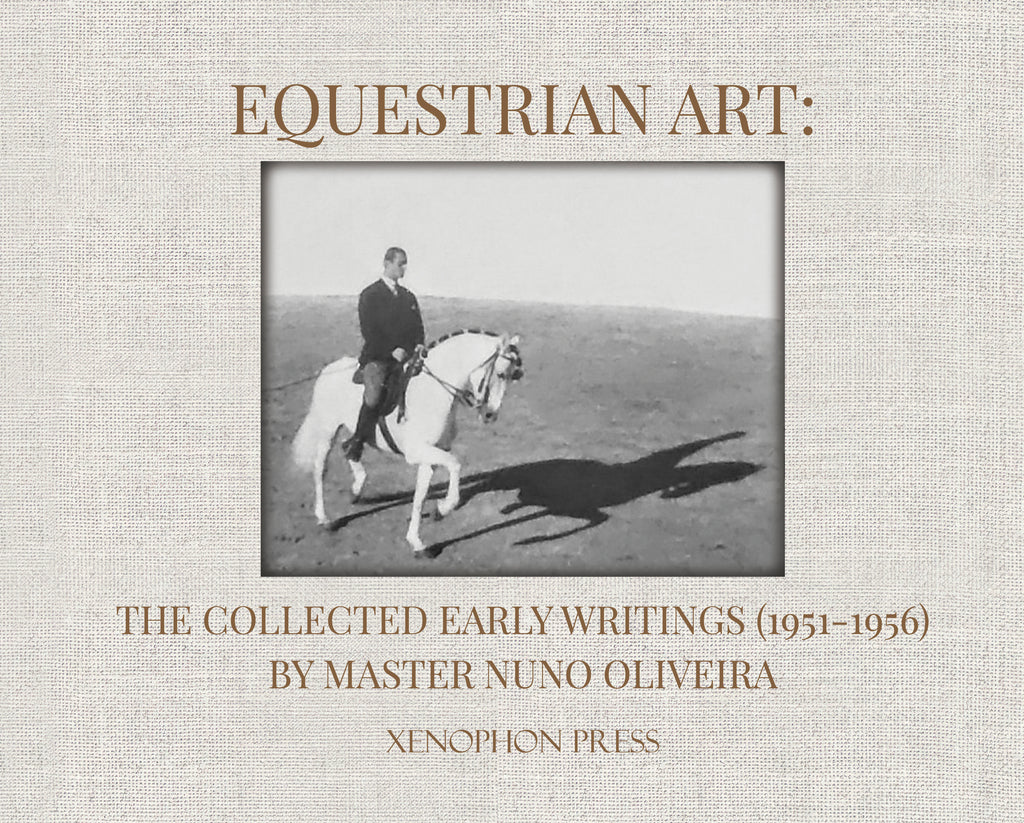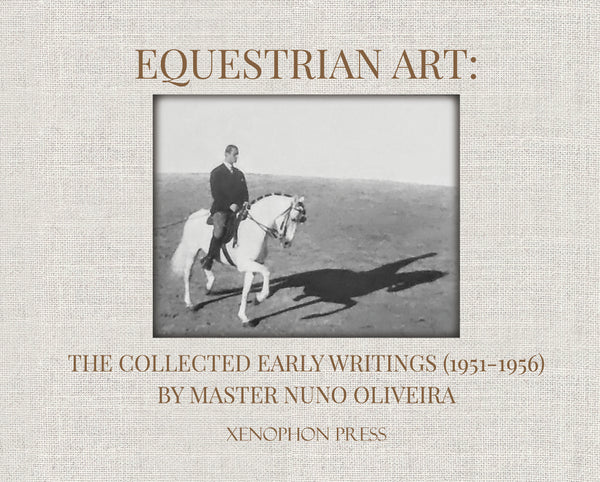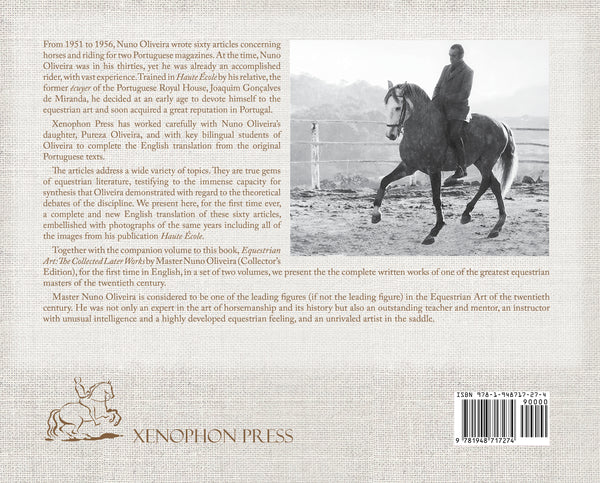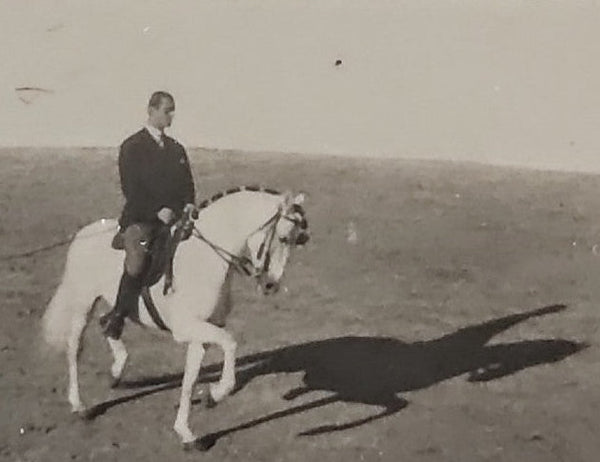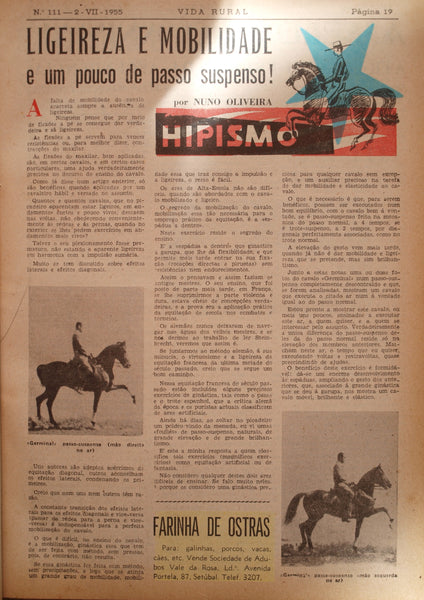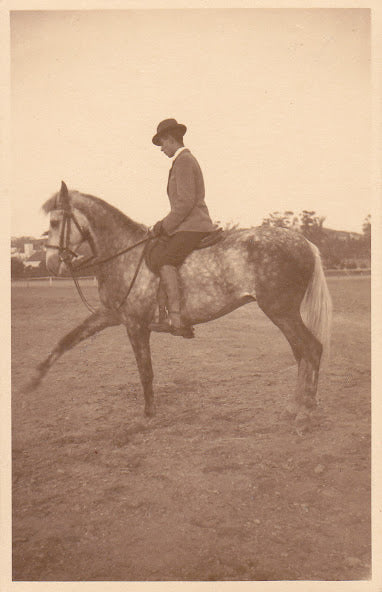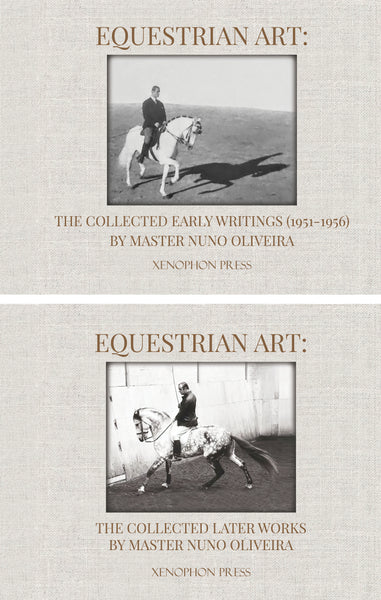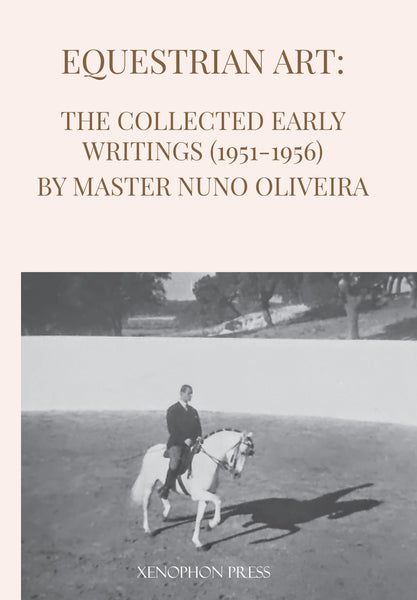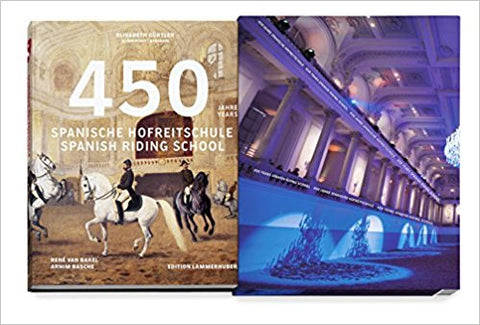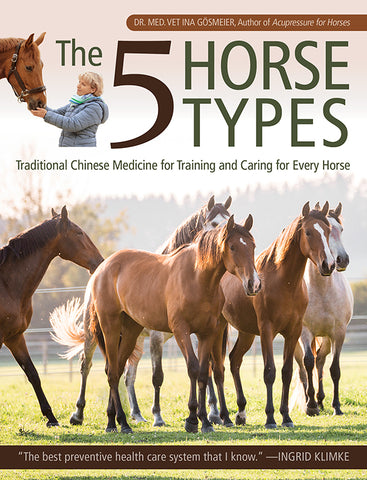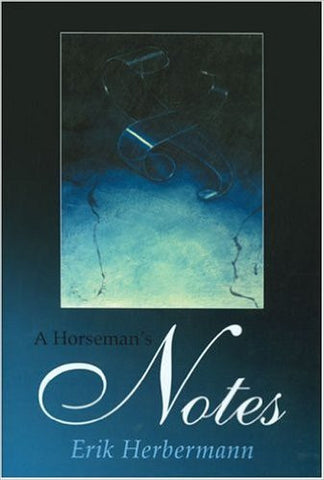Equestrian Art: The Collected Early Writings (1951-1956) by Master Nuno Oliveira
From 1951 to 1956, Nuno Oliveira wrote about sixty articles concerning horses and riding in two Portuguese magazines, "Diana" from 1951 to 1954, then "Vida Rural" until the end of 1956.
At the time, Nuno Oliveira was in his thirties, yet he was already an accomplished rider, with vast experience. Trained in haute école by his relative, the former écuyer of the Portuguese Royal House, Joaquim Gonçalves de Miranda, he decided at an early age to devote himself to the equestrian art and soon acquired a great reputation in Portugal.
The articles he wrote in the 1950s, are succinct, most around 1000 words long, never start from a lofty view of horse riding. Most of these early writings are models of that great equestrian intelligence which was one of the hallmarks of his personality. Until now, they were neither collected in a single volume nor fully translated into English.
Some of the articles were included in two books, one in Portuguese in 1955, entitled Breves notas sobre uma arte apaixonante (a equitação), and the other in France in 1965 called Réflexions sur l’art équestre, a partial translation by René Bacharach. Neither of these previous books included all 60 articles.
The Portuguese book did not include some of the early articles, and obviously not those that were written later, from the end of 1955 and in 1956. Even though, many of these are of great interest.
As for the French book, it did not contain all of the material either, even if it made extensive use of all the articles up to the end of 1956. But it omitted a certain number of texts , and largely reorganized those that were retained, sometimes distorting the meaning.
Jean Magnan de Bornier, a student of Nuno Oliveira's, took on the project of offering French readers an integrated version of these texts, giving them the opportunity to appreciate these writings which are still current and incredibly, have been dormant for sixty years.
Xenophon Press has worked carefully with Nuno Oliveira's daughter, Pureza Oliveira and with key bilingual students to complete the English translation from the original Portuguese texts.
The articles address a wide variety of topics including, for example, diagonal and lateral effects, the fine tuning of aids, the horse's memory, etc. These articles are true gems of equestrian literature, testifying to the immense capacity for synthesis that Oliveira demonstrated with regard to the theoretical debates of the discipline.
We present here for the first time ever, a complete and new English translation of these 60 articles, embellished with photographs of the same years.
Together with the companion volume to this book, Equestrian Art: The Collected Later Works by Master Nuno Oliveira (Collector's Edition), we now present, for the first time in English, in a set of two volumes, the complete written works of one of the greatest equestrian masters of the twentieth century.
Master Nuno Oliveira is considered to be one of the leading figures (if not the leading figure) in the Equestrian Art of the 20th century. He was not only an expert in the discipline and its history but also an outstanding teacher and mentor, an instructor with unusual intelligence and a highly developed equestrian feeling, an unrivaled artist in the saddle.
His great genius consisted of the comprehensive synthesis of the two emerging but up until then, contrary schools of the Old French riding masters as represented by the teachings of Francois Robichon de la Guérinière (of the 18th century) and Francois Baucher (of the 19th century). What made Oliveira stand out was his unwavering, unprejudiced pragmatism, which let him find the best method from all of the schools for working on a specific goal with a specific horse at a specific moment.
He believed that every single horse had to be trained to the highest degree of perfection and shine within the scope of its individual possibilities. He rose above any doctrinal dispute and focused on the task at hand. A rider should not only ride but also observe, study, read and think carefully. He/she should act rationally and calmly, never act brutally or with force; he should have love of the horse and develop great equestrian feeling, the greatest of all equestrian virtues.
To achieve this, he taught with the messages of Etienne Beudant and Faverot de Kerbrech: "Ask often, be satisfied with a little, and reward often."
ISBN: 9781948717274
From the table of contents, the complete list of articles:
1 Relaxation
2 Equestrian Digressions
3 The Ramemer
4 How to Solve Some Training Difficulties
5 Impulsion in the High School Horse
6 Teaching Methods
7 Brief Notes on the History of Equitation
8 Breaking-in the Young Horse
9 The Rider’s Position
10 Questions on Canter
11 Working the Horse In-hand
12 Horses that I Will Never Forget
13 Flying Changes
14 The Reading of Riding Treatises
15 Funeral Feet: Two Conflicting Opinions
16 Equestrian Tact
18 Piaffe
19 The Shoulder-in and the Half-pass
20 Artificial Airs and the Circus
21 The Spanish Walk
22 The Brilliance of the Horse and the Correctness of the Rider
23 Is it Worth it? Yes, Always!
24 Spanish Trot
25 Accordance and Discordance of the Aids
26 The Right Horse
27 School Airs at the Canter
28 Gymnastics for the Rider
29 The Perfect Rassembler
30 The School Levade
31 Baucher and the Flexions of the Jaw, their Advantages and their Disadvantages
32 Horses that Don’t Obey
33 How to Have Obedient and Attentive Horses
34 The Neck of the Horse: Its Placement
35 The Elevation of the Limbs
36 Again on the Subject of Passage and Piaffe
37 The Supple and Well-Trained Horse
38 Lightness, Mobility, and the Spanish Walk
39 The Horse’s Memory
40 Some Equestrian Episodes Described in Several Riding Books
41 Counter-Canter
42 The Legs of the Rider
43 Equitation, a Truly Subtle and Profound Art
44 The Flexibility of the Spinal Column
45 Three Lessons
46 Good Horses, Bad Horses
47 The School Trot
48 Halts - Immobility
49 Diagonal Effects and Lateral Effects
50 Some Considerations on the Finesse of the Rider
51 Work on Two Tracks
52 The Combined Effect
53 The Old School - Baucher’s Method - The Modern School
54 Haunches-in at the Canter
55 Digressions on the Mobility and Lightening of the Horse
56 Riders Who Hold Their Horses and Riders Who Let Them Free Horses that Have Difficulties to Place Themselves
57 Superior Equitation, High School Equitation
58 Teaching Equitation
59 French School! German School! General Actions and Partial Actions
60 Taming Horses and Training Horses
Epilogue: Introduction to Haute École

